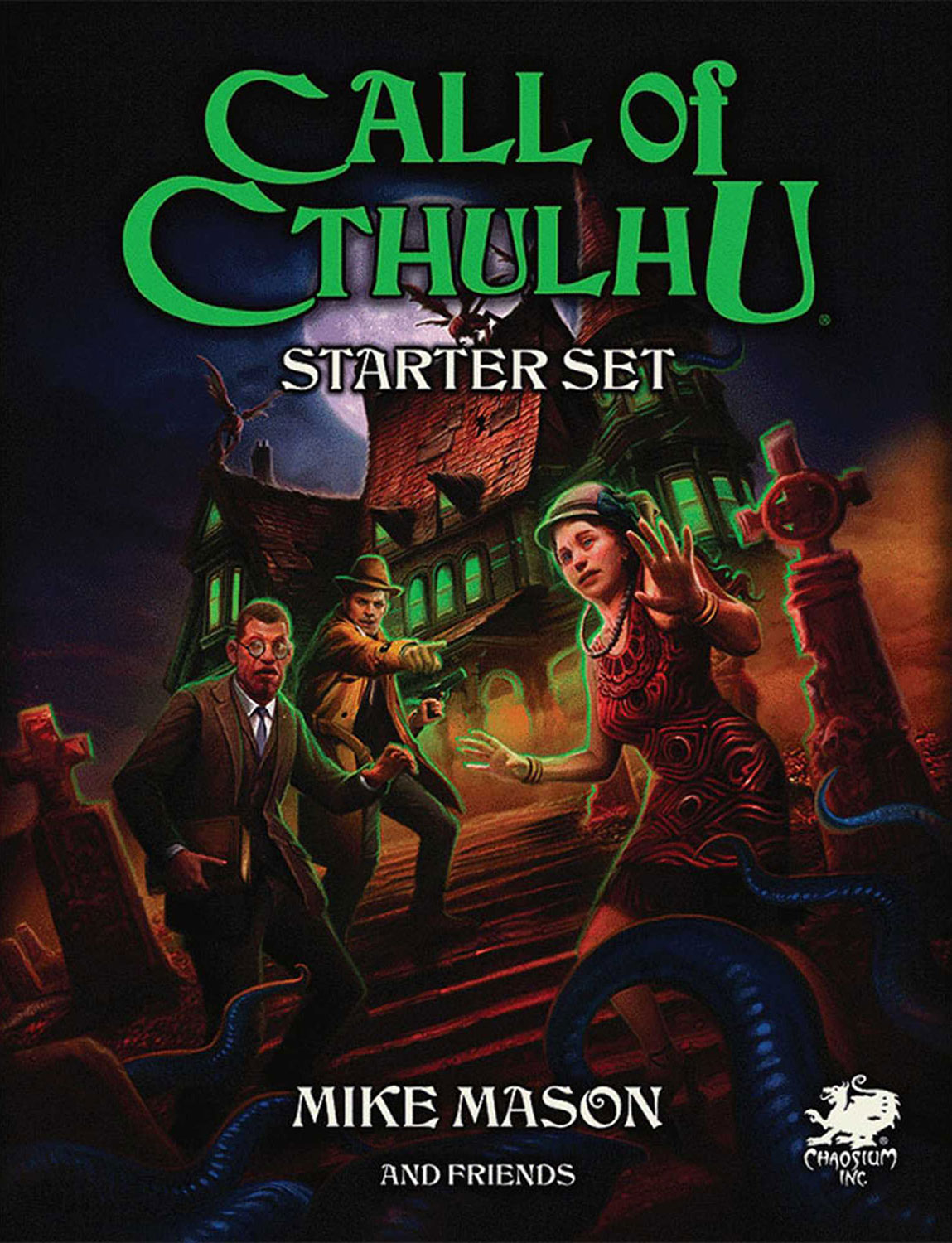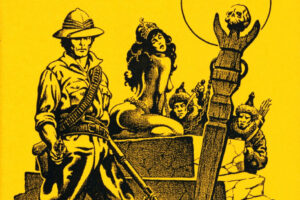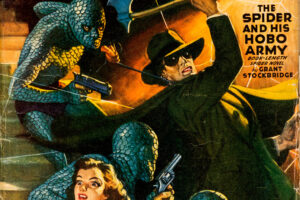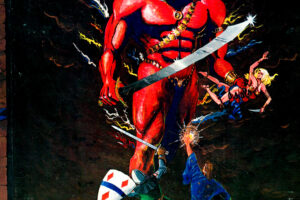 While there are several now, the first and best-known is Call of Cthulhu, which I obtained shortly after its release in 1981 and played several times in the ’80s. Published by Chaosium, it’s based on their Basic Role-Playing (BRP) system, like their other games. Designed by Sandy Petersen, Chaosium has had its ups and downs over the years.
While there are several now, the first and best-known is Call of Cthulhu, which I obtained shortly after its release in 1981 and played several times in the ’80s. Published by Chaosium, it’s based on their Basic Role-Playing (BRP) system, like their other games. Designed by Sandy Petersen, Chaosium has had its ups and downs over the years.
They currently are on their 7th edition, which came out in 2014. They have a lot of supplements, even making available, at least through PDF, older materials tied to previous editions. Some of their notable works is the massive Masks of Nyarlathotep campaign, which first came out 1984. While the basic game is based in the 1920s, they have provided works that provide additional rules and information for adventures in other periods, or settings, such as the Dark Ages, 1880s England (Gaslight), the old West (Down Darker Trails), the time of Rome (Invictus), a pulp setting (Pulp), or modern times (Cthulhu Now). And supplements provide information on setting the game in other cities (London, Paris, Cairo, etc.) or countries/continents (Australia, Antarctica, etc). There are books with scenarios or campaigns (linked scenarios), some of which are settings-based. These books can have from 1 to 6 scenarios, and some are also aimed at beginners.
One element that I really like was the handouts or props that were created for the games, especially those that came in the boxed sets. Even if some were just things you photocopied and cut up, it added a level of verisimilitude to the games. Some of the additional items they had were the Petersen Field Guides, which have been brought back to a degree. So even if you weren’t interested in role-playing, if you were a Lovecraftian fan, these would be of interest.
Another thing I thought was neat was when Chaosium started a line of fiction collections in the ’80s. Many of them at first where themed on certain authors and works, and brought back into print works that where hard to find at the time. I was thrilled to get their three-volume set of Arthur Machen works, as nothing else was out there. (they’ve since been superceded by the recent Hippocampus Press collections). Others focused on the works of Lin Carter, Ramsey Campbell, Robert E. Howard, Clark Ashton Smith, and others. I hope to do posting on these at some point.
So let’s talk about the game itself. In a basic game, usually referred to as a “scenario,” you play an investigator looking into the mysteries of the mythos. This is similar to what you read in many of Lovecraft’s stories where an ordinary person is looking into some matter (maybe researching strange happenings, or finding out more about their family, etc.) and are pulled into the mystery, often not surviving the encounter. They could be scholars, private eyes, criminals, war vets, or the like. So a common theme in the game is that the player characters don’t always survive a scenario, much less a multi-scenario campaign. This is due to the game having the concept of “sanity points,” which can be lost during the course of the game until the character goes insane.
What I find interesting is the large number of licensing that existed in the early years. When I got involved, Chaosium allowed a few companies to create authorized game scenarios, several of which I got from folks like Games Workshop, Grenadier, and a group called “Theater of the Mind Enterprises”. A notable one was Pagan Publishing, which created the Delta Green game, set in modern times with a shadowy government agency fighting against the mythos called Delta Green. I see there are several other companies out there creating supplements, usually with a particular focus, such as Golden Goblin (lot of Invictus stuff), Cubiclue 7 did Cthulhu Britannica and World War Cthulhu, etc. But it seems that several of these licenses have expired and their material is harder to find.
Chaosium put out a board game called Arkham Horror in 1987, which was later turned over to Fantasy Flight Games, which created a second edition (2005) and a third edition (2018) that is very popular. Both have several supplements. FFG has created other board games loosely tied to it including Eldritch Horror and some others, calling them all the “Arkham Horror Files”. I will probably look at these with another posting.
Card games are another area. Think games like Magic: The Gathering, Pokemon, et al. Chaosium got into the “collectable card game” field with Mythos, which turned out to be a big failure that almost took the company down. They later licensed FFG to create Call of Cthulhu: The Card Game, which they later dropped. FFG soon created a new game in their system which they called a “living card game” (LCG) Arkham Horror: The Card Game that has been fairly popular. I will be doing a posting on this game at some point as well.
If you want to get into Call of Cthulhu, the best way is to obtain the Starter Set (23158-X). It provides a solo scenario, “Alone Against the Flames,” and the basic rules to get started. One thing CoC has are several solo scenarios under the “Along Against” line. In most of the Lovecraftian stories, it’s someone on their own, not a group of a half dozen or so. I think there should be more solo scenarios. Thankfully the board and card games can be played solo. They had also created books with “beginner” scenarios, such as Doors to Darkness and Mansions of Madness, some of which also provide pre-created characters for the players to use.
From that point, you can get the seventh edition rules, which actually comes in two volumes. One is an Investigator’s Handbook, and the other is the Keeper Rulebook. The keeper is the gamemaster, the person who runs the scenarios the players play. From that point, the keeper can create their own scenarios, or make use of the many written scenarios from Chaosium that I noted.
I used to play the game years ago, but haven’t in a long while, though I am slowly getting back into things. If others have played the game, please post your experiences here. Chaosium has recently done a Kickstarter campaign to reprint the original boxed set, along with a handful of the first few supplemental booklets.
[UPDATED/REVISED]



You like call of Cthulhu handouts? You’ll really like this: https://store.hplhs.org/products/masks-of-nyarlathotep-gamer-prop-set?_pos=1&_sid=0a041f1ad&_ss=r brought to you by the H.P. Lovecraft Historical Society
As a lifetime member of the Society, am well aware of them.
Guess I need to work on a posting on them and their products, like their “radio” shows.
Good overview of the Call of Cthulhu scene and of Chaosium’s part in it. One thing I would like to note is that CoC works just fine as an RPG for pulp campaigns that don’t include Lovecraft’s Great Old ones. Would your players care for a taste of Fu Manchu or El Borak in their adventures? How about King of the Khyber Rifles or Jimgrim? Solar Pons or Jules de Grandin? Call of Cthulhu (or Basic Role Playing, to give it the generic name) can handle all of that and more.
Thanks for the post!
While true, I think most pulp game fans would use other systems like Mercenaries, Spies & Private Eyes or Hero Games’ Pulp Hero as there is already materials developed for them.